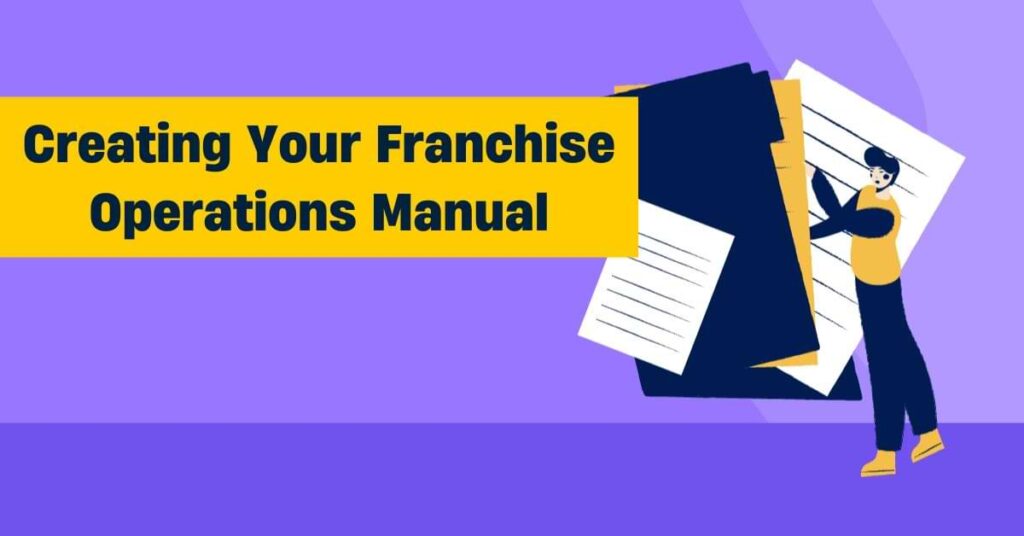When diving into the world of franchising, the Franchise Operations Manual serves as your franchise’s bible. It’s a comprehensive document that outlines every detail of running a franchise unit. But what exactly is this manual, and why is it so crucial?
A Franchise Operations Manual is essentially a detailed guidebook that covers all operational aspects of a franchise. This includes everything from day-to-day procedures to overarching business strategies. Think of it as the go-to resource for franchisees, providing clear instructions and standards that ensure consistency across all franchise locations.
Why is a Franchise Operations Manual Important? Without this manual, franchisees would be left navigating the complexities of business operations on their own. It ensures that all franchisees operate under the same guidelines, which helps maintain brand integrity and customer satisfaction. Additionally, it helps streamline training, making it easier for new franchisees to get up to speed quickly.
Key Components of a Franchise Operations Manual
Business Overview
The Business Overview section introduces the franchisee to the business, including its history, mission, vision, and core values. This section should set the tone for the entire manual, outlining the brand’s identity and what makes it unique.
Franchise System Details
This section dives into the specifics of the franchise system, including the structure, support provided by the franchisor, and the franchisee’s role. It covers the nuts and bolts of the franchise operation, providing clarity on what the franchisee can expect and what is expected of them.
Operational Procedures
Here, you’ll detail the day-to-day operations, including procedures for managing staff, handling inventory, and customer service protocols. This is where the franchisee will find step-by-step instructions for running the business smoothly and efficiently.
Marketing and Sales Strategies
Marketing and sales are the lifeblood of any franchise. This section should outline the marketing strategies and sales techniques that have been proven effective for the franchise. It includes advertising guidelines, promotional strategies, and customer engagement tactics.
Training Programs
Effective training is essential for franchise success. This part of the manual should provide detailed information on training programs, including initial training for new franchisees and ongoing training for staff. It helps ensure that everyone is well-prepared to represent the brand effectively.
Compliance and Legal Requirements
Ensuring compliance with legal standards is critical. This section should cover all relevant legal requirements, including health and safety regulations, employment laws, and any industry-specific regulations. It’s crucial to keep this section updated to reflect any changes in laws or regulations.

Creating Your Franchise Operations Manual
Step-by-Step Guide
Creating a Franchise Operations Manual involves several key steps. Here’s a step-by-step guide to help you get started:
Research and Gathering Information
Begin by gathering all relevant information about your franchise operations. This includes existing procedures, best practices, and feedback from current franchisees. Conduct thorough research to ensure that you’re covering all necessary aspects.
Drafting the Manual
Start drafting your manual by organizing the information into a coherent structure. Use clear, concise language and include practical examples where possible. Remember, the goal is to make the manual easy to understand and follow.
Review and Revision
Once you’ve drafted the manual, it’s time for review and revision. Seek feedback from key stakeholders, including franchisees and legal advisors. Make necessary revisions to ensure that the manual is accurate and comprehensive.
Design and Layout Tips
User-Friendly Design
A well-designed manual is easier to use and more effective. Focus on creating a user-friendly layout that is easy to navigate. Use headings, subheadings, and bullet points to break up the text and make it more readable.
Incorporating Visuals
Visuals can enhance the readability of your manual. Include diagrams, flowcharts, and images to illustrate key points. This not only makes the manual more engaging but also helps clarify complex procedures.
Table of Contents and Indexing
A detailed table of contents and an index are essential for helping users find information quickly. Ensure that these sections are well-organized and easy to navigate.
Legal Considerations
Franchise Disclosure Document (FDD)
The Franchise Disclosure Document (FDD) is a critical legal document that must be provided to prospective franchisees. It includes information about the franchise system, fees, and legal obligations. Ensure that your Franchise Operations Manual aligns with the FDD requirements.
Intellectual Property Protection
Protecting your franchise’s intellectual property is essential. This includes trademarks, copyrights, and proprietary information. Ensure that your manual includes guidelines for protecting these assets.
Training and Implementation
Training the Franchisees
Training is a crucial component of successful franchise operations. Provide comprehensive training for new franchisees, including hands-on sessions and ongoing support. This helps ensure that they fully understand and can effectively implement the procedures outlined in the manual.
Manual Updates and Revisions
Your Franchise Operations Manual should be a living document that is regularly updated. As your franchise evolves and new procedures are introduced, make sure to revise the manual accordingly. Regular updates help keep the manual relevant and useful.
Case Studies and Examples
Successful Franchise Operations Manuals
Looking at successful franchise operations manuals can provide valuable insights. Analyze examples from well-established franchises to understand what works and what doesn’t. This can guide you in creating a manual that meets the needs of your franchisees.
Common Pitfalls to Avoid
Avoid common pitfalls when creating your manual. These include being too vague, failing to update the manual regularly, and not providing sufficient training. Learn from the experiences of others to create a more effective and user-friendly manual.
Conclusion
In summary, a well-crafted Franchise Operations Manual is essential for the success of any franchise. It provides a clear roadmap for franchisees, ensuring consistency and quality across all locations. By following the steps outlined in this guide, you can create a manual that supports your franchisees and helps your business thrive.
FAQs
What should be included in a Franchise Operations Manual?
A Franchise Operations Manual should include sections on business overview, franchise system details, operational procedures, marketing and sales strategies, training programs, and compliance requirements.
How often should a Franchise Operations Manual be updated?
The manual should be updated regularly to reflect changes in procedures, regulations, and business practices. A good rule of thumb is to review and revise the manual at least once a year.
Can a Franchise Operations Manual be customized for different locations?
Yes, while the core content should remain consistent, some sections of the manual can be customized to address specific needs of different locations, such as local marketing strategies or regulatory requirements.
What are the legal requirements for a Franchise Operations Manual?
The manual must comply with franchise laws and regulations, including the Franchise Disclosure Document (FDD) requirements. It should also address intellectual property protection and any industry-specific legal requirements.
How can a Franchise Operations Manual improve franchisee performance?
A comprehensive manual provides franchisees with clear guidelines and best practices, helping them operate efficiently and consistently. This leads to improved performance, customer satisfaction, and overall success.
 franchisemarket Empowering Your Franchise Journey
franchisemarket Empowering Your Franchise Journey

